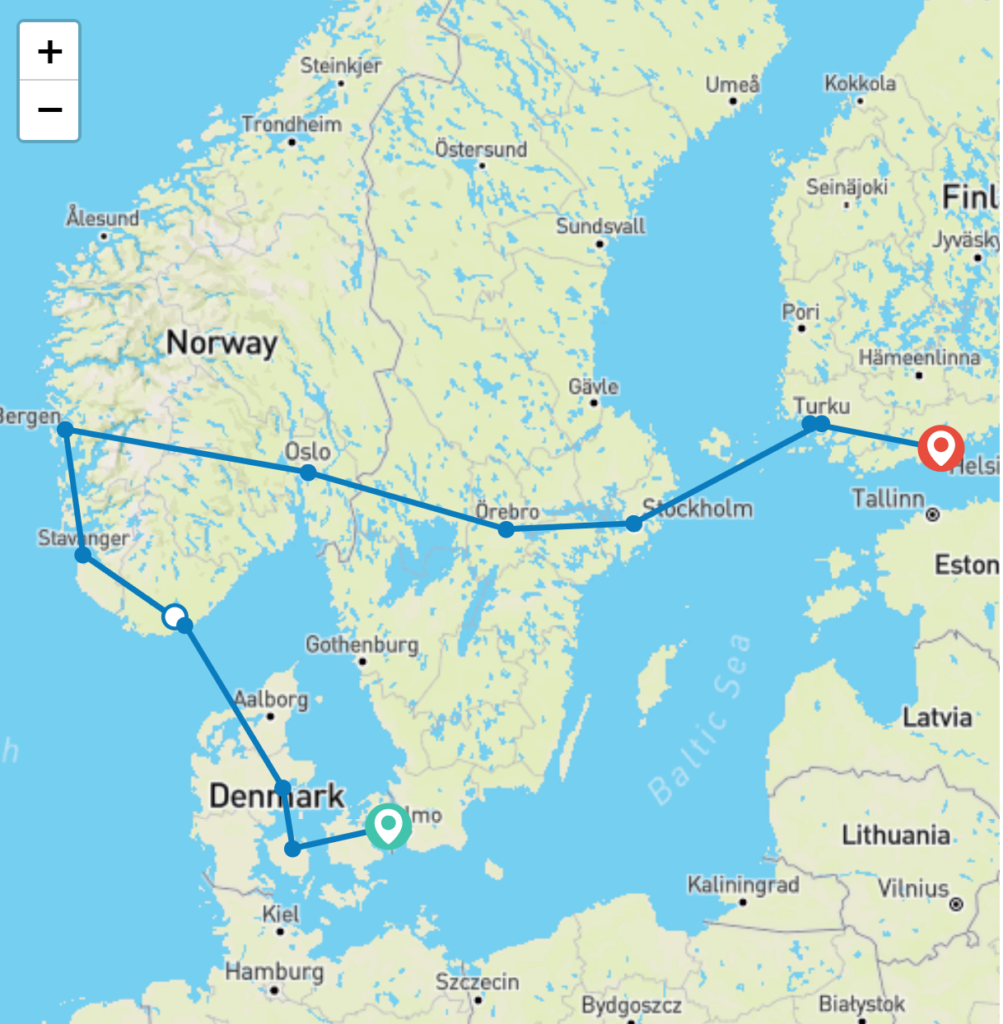… or Our First Experience Being Led Around by the Nose
During our extensive travels, we’ve always been completely in charge of own travel itinerary, a process that involves extensive planning and research, and can be frankly exhausting. For our first big trip post-COVID, we decided to give ourselves a break from logistics and try an organized tour. We looked over the endless options, our budget in mind, and chose Scandinavia, a region neither of us had ever visited.
So in September 2022 we embarked on a three-week clockwise tour around Scandinavia, from Copenhagen to Helsinki, that incorporated buses, ferries, and fjords. All we had to do was pack, then hand our luggage to the bus driver.
We booked this tour through Tour Radar, which offers a huge selection of multi-day travel experiences for all budgets. Their tour operators take care of everything from logistics to meals to experiences to friendly guides. The operator of our Scandinavian tour was Europamundo. We’ll do a whole blog later about the tour experience. It was a bit of a whirlwind, so don’t expect a lot of details in these videos!
Our tour of Scandinavia kicked off with a walking tour of Copenhagen, followed by a bus ride to Odense, hometown of writer Hans Christian Andersen.
Join us as we visit the famous Little Mermaid statue in Copenhagen (the book was written by Andersen, author of many beloved fairy tales), the Denmark Royal Palace, the romantic Copenhagen Town Hall, Andersen’s childhood home, and the Odense Cathedral. We ended the first day with a cozy outdoor dinner beside a scenic canal in the vibrant city of Aarhus, one of the oldest cities in Denmark.
Speaking of Andersen, you can do a whole vacation that centers around this beloved author, who in addition to The Little Mermaid wrote The Ugly Duckling, The Snow Queen, and many others. (Link below.)

ITINERARY
This is what the TourRadar itinerary listed for the day:
Day 1. Jueves, 22 De Septiembre De 2022 — COPENHAGUE , ODENSE, AARHUS
Distance: 315 km
Scenery: Pleasant hills in southern Denmark
At 08:00 h. we start out on a comprehensive tour of the Danish capital; the largest of the Scandinavian cities is a city of contrasts: its popular “Tivoli”; Christianborg Palace; the terraces of Nyhavn, and the mermaid… The visit ends at about 10:30 h.
11:30 h.– Copenhagen –Departure-. We will travel to the Jutland Peninsula, passing through pretty landscapes with hills and crossing the 20 km long bridge that connect Jutland to the island on which Copenhagen stands.
14.00 h.- Odense- Arrival. Free time to explore and have lunch in this pleasent city where you can visit its gothic cathedral and the house of Andersen.
16.00 h.- Odense. Departure.
18.15 h.- Aarhus –Arrival-. Free time. We recommend a visit to this pretty city, the Danish city with the second highest population.
INFO:
Tourradar
Europamundo
Copenhagen
Odense
Aarhus
Hans Christian Andersen Tour

